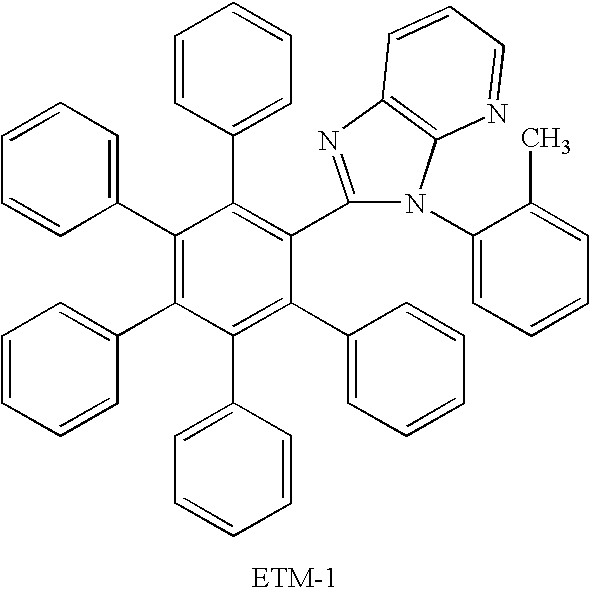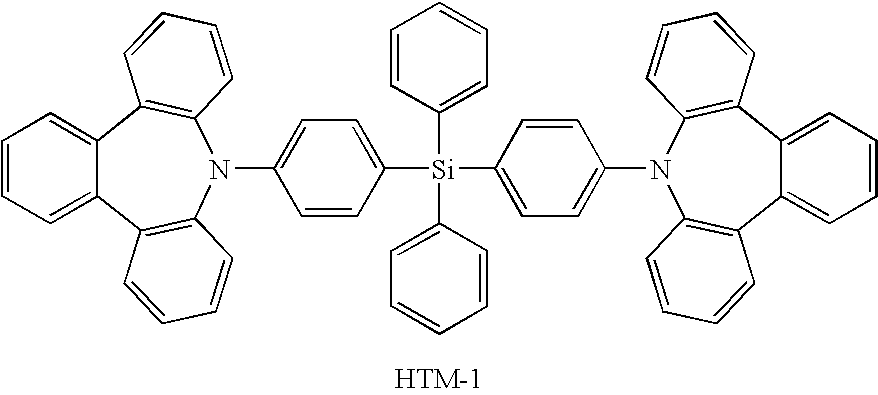Organic electroluminescent element
- Summary
- Abstract
- Description
- Claims
- Application Information
AI Technical Summary
Benefits of technology
Problems solved by technology
Method used
Image
Examples
example 1
1. Preparation of Organic Electroluminescent Element
(1) Preparation of an Example Organic Electroluminescent Element (TC-11)
[0098] A 2.5 cm square and 0.5 mm thick glass substrate with an ITO film (surface resistivity: 10 Ω / sq., manufactured by Geomatec Co., Ltd.) was put into a washing vessel, washed in 2-propanol by applying ultrasonic, followed by subjecting to a UV-ozone process for 30 min. On the transparent anode (ITO film), by use of a vacuum deposition method, organic compound layers below were sequentially deposited.
[0099] The deposition speed in the examples according to the invention, unless otherwise mentioned, was 0.2 nm / min. The deposition speed was measured with a quartz oscillator. Thicknesses of the layers described below were also measured with a quartz oscillator.
[0100] Values of the ionization potentials and electron affinities of the respective organic compound layers in the TC-11 are described together in configurations of the respective layers.
(First H...
PUM
| Property | Measurement | Unit |
|---|---|---|
| Molecular strain energy | aaaaa | aaaaa |
| Bond energy | aaaaa | aaaaa |
| Energy | aaaaa | aaaaa |
Abstract
Description
Claims
Application Information
 Login to View More
Login to View More - R&D
- Intellectual Property
- Life Sciences
- Materials
- Tech Scout
- Unparalleled Data Quality
- Higher Quality Content
- 60% Fewer Hallucinations
Browse by: Latest US Patents, China's latest patents, Technical Efficacy Thesaurus, Application Domain, Technology Topic, Popular Technical Reports.
© 2025 PatSnap. All rights reserved.Legal|Privacy policy|Modern Slavery Act Transparency Statement|Sitemap|About US| Contact US: help@patsnap.com



